JK Tyre Inaugurates India’s First Precision Tyre Buffing And Grinding Machine At NATRAX
- By TT News
- November 04, 2025
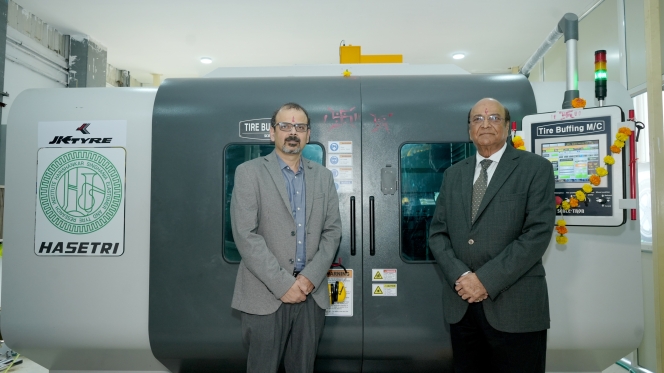
JK Tyre & Industries Ltd on Monday inaugurated India’s first precision tyre buffing and grinding machine for wet grip testing of worn tyres at the National Automotive Test Tracks (NATRAX) facility in Pithampur, Madhya Pradesh, marking a significant step towards advancing road safety and self-reliance in tyre performance evaluation.
The inauguration ceremony was attended by Dr Raghupati Singhania, Chairman and Managing Director of JK Tyre, and Dr. Manish Jaiswal, Director of NATRAX, along with senior officials from both organisations.
The newly installed equipment complies with ECE R117 regulations, which evaluate a tyre’s wet braking performance when worn to the legal tread depth limit of 1.6 mm. The system allows precise preparation of worn tyre samples across C1 (passenger car), C2 (light commercial) and C3 (heavy truck/bus) categories, enabling comprehensive Wet Grip on Worn Tyre (WGWT) testing at NATRAX.
“With the inauguration of the Precision Tyre Buffing and Grinding Machine (Wet Grip on Worn Tyre) at NATRAX, JK Tyre has taken yet another step forward in advancing tyre testing and safety innovation in India,” said Dr. Raghupati Singhania, Chairman and Managing Director, JK Tyre & Industries. “It reflects our unwavering commitment to innovation, technology leadership, and enhancing vehicular safety through modern engineering and contribution to build world-class testing infrastructure.”
The installation strengthens JK Tyre’s existing testing ecosystem, supporting both homologation and new product development. The company has been associated with NATRAX since 2017, utilising its advanced facilities for vehicle-level testing such as handling, braking, wet grip and noise evaluation.
JK Tyre has also invested in dedicated infrastructure at the NATRAX campus, including two workshops, a skilled technical team, and advanced testing equipment such as a skid trailer, steering robot and noise measurement systems, supported by a fleet of test vehicles.
Siemens Brings Traditional Tyre Making Into Digital Age
- By Sharad Matade
- November 04, 2025

The global tyre industry is in the midst of its greatest upheaval since the pneumatic tyre – driven by rapid digital transformation. Siemens, the German global technology company, is leading this revolution, quietly redefining how tyres are designed, manufactured and maintained worldwide.
In a sprawling industrial complex outside Nuremberg, Peter Haan, Head of Global VM Tire, Siemens, brings the enthusiasm of someone who has witnessed an industry’s complete metamorphosis to the oversight of Siemens’ global tyre operations. Recently, Haan outlined the company’s comprehensive strategy for modernising tyre production – addressing the price-sensitive manufacturers of Asia as well as the sustainability-focused plants of Europe.
“Digital transformation didn’t start yesterday, and it didn’t even start during the pandemic,” Haan explains, dispelling common misconceptions about the industry’s technological evolution. “We’ve been working on this for more than 10 years now. We had digital twins a decade ago, which might surprise people who think this is cutting-edge technology.”
The Industrial Metaverse Revolution
The foundation of Siemens’ approach lies in what Haan calls ‘digitalisation for design’ – the creation of what the company now terms the industrial metaverse. This comprehensive digital simulation integrates machines, programmes and entire production processes. It represents years of focused development and has achieved what Haan considers ‘very good status with our integrated approach’.
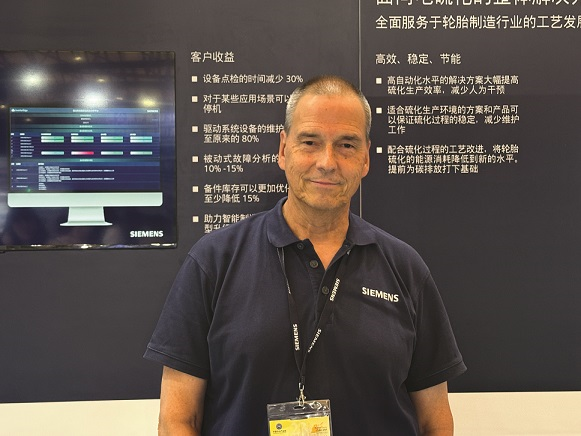
Haan’s descriptions of recent projects clarify these implications. “We are just building a new plant in Singapore and expanding an existing plant in Germany” he reports. Due to confidentiality agreements, he cannot display the complete digital representation on his computer. Instead of seeing only lines and geometric shapes that require imagination to translate into real machines, one can now observe photorealistic models: virtual people moving, machinery operating and materials progressing through the production process.
This industrial metaverse requires immense computing power, necessitating a close partnership between Siemens and Nvidia. While most consumers know Nvidia for its gaming graphics cards, the company also produces high-end simulation capabilities that enable Siemens and Siemens customers to run simulations in real time with an absolute realistic look and feel.
A second key pillar is digitalisation for operations, achieved through advanced planning and scheduling systems. Tyre manufacturing today exists in a dynamic environment, where customer demands can change daily, a stark contrast to the older, more predictable monthly or quarterly cycles.
“Today, a customer might want to capture one market segment. Tomorrow, they might pivot to electric vehicle tyres. Next week, they could have entirely different ideas based on market conditions,” Haan explains. “Traditional planning systems simply cannot handle this level of flexibility.”
The solution involves Manufacturing Operations Management (MOM) systems that provide immediate responsiveness to market changes. Siemens has successfully implemented this approach across multiple regions, including a completely new greenfield facility in Chennai, which was designed from the ground up using digital operations principles.
Modernising Legacy Infrastructure
The process of implementing digitalisation becomes more challenging when accounting for the hundreds of tyre manufacturing plants worldwide, many of which are equipped with machinery that has decades of operational history. Nevertheless, Siemens has crafted a methodical approach to address these ageing systems.
“This is actually easier to answer than most people expect, though the implementation requires careful planning,” Haan notes. The process begins with laser scanning systems that create high-precision three-dimensional digital representations of entire facilities, mapping every machine location, material flow and worker movement pattern.
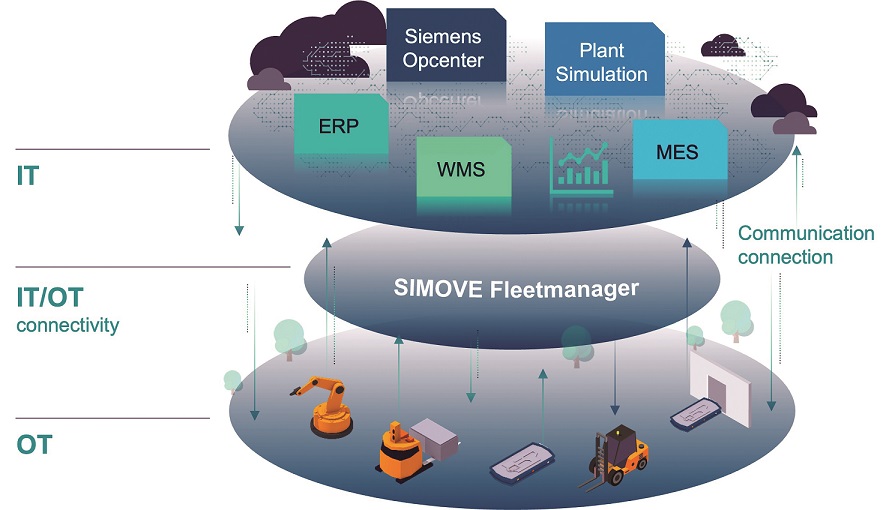
This laser-generated data becomes the foundation for plant simulation software that models current operations. “The next crucial step is comparing our simulation results with actual reality to ensure accuracy,” Haan explains. “Initially, no improvement is achieved – we’re simply creating a digital mirror of existing operations.”
Once accurate digital representations exist, optimisation can begin in the virtual environment first. Companies can simulate workflow changes, test automated guided vehicle implementations and identify bottlenecks without disrupting actual production.
To add intelligence to existing machinery, Siemens utilises edge computing devices. “Our SIMATIC IPC127E, for instance, can connect to all existing automation systems, even equipment that’s 30 years old,” Haan says. “We can interface with legacy automations systems from Siemens and any supplier, thus adding intelligence to old machines”
The retrofit approach varies based on existing capabilities. Some situations require minimal hardware changes, while others demand comprehensive replacements of the automation system. “If you have a state-of-the-art automation system, you might need no new hardware at all – just download additional functionality,” Haan explains.
Digital Twins And Real-Time Optimisation
The concept of digital twins running parallel to actual production represents one of Siemens’ most sophisticated technological achievements. These systems utilise edge computing to operate what Haan calls ‘live twins’ that mirror physical machine behaviour in real-time.
Tyre curing provides a compelling example of this technology’s potential. “The temperature inside the bladder during the curing process is challenging to measure directly, especially with traditional rubber bladders,” Haan explains. “But with our digital twin technology, we have virtual sensors so sophisticated that you can specify any point in the bladder, and our system can compute and calculate the exact temperature at that location.”
This capability bridges the gap between simulation and the real world, providing measurement data that is unobtainable through physical sensors. The digital twin processes information such as product geometry, material compression due to steam or water and flow directions influenced by the physical layout. With this, precise optimisation of curing parameters becomes achievable.
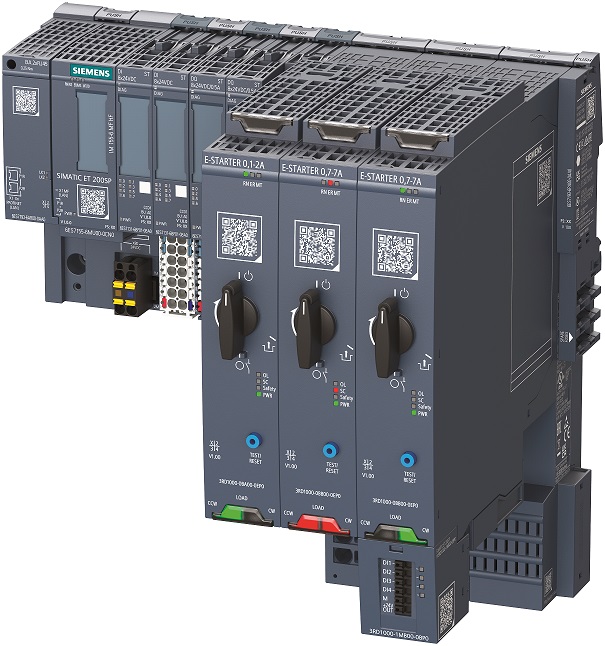 “The simulation can then influence real curing behaviour, making the process more accurate and potentially reducing curing time,” Haan notes. For electric curing systems, this precision enables targeted heating adjustments, such as applying additional heat to tyre edges while maintaining optimal internal temperatures.
“The simulation can then influence real curing behaviour, making the process more accurate and potentially reducing curing time,” Haan notes. For electric curing systems, this precision enables targeted heating adjustments, such as applying additional heat to tyre edges while maintaining optimal internal temperatures.
Regional Market Dynamics
The global tyre industry’s digital transformation unfolds differently across regions, requiring distinct strategies tailored to local market conditions and regulatory environments. These differences significantly impact how Siemens approaches each market.
In China and the broader Asia-Pacific region, price sensitivity dominates decision-making processes. “Customers are extremely price-sensitive, focusing primarily on capital expenditure (CAPEX). Operational expenditure (OPEX) considerations often aren’t in scope initially,” Haan explains. “We have to continually focus about lifecycle costs versus initial purchase prices.”
This dynamic creates challenges for Siemens’ solutions. When comparing automated guided vehicles, for example, Chinese manufacturers often prefer locally-produced systems based on proprietary electronics that appear cheaper initially. Siemens takes a different approach, building AGVs exclusively with industrial automation components – standard PLCs, drives, motors and HMIs.
“Initially, our solution costs more compared to a proprietary electronics-based AGV – we simply cannot compete on initial price with local suppliers,” Haan acknowledges. “However, when you consider lifecycle costs, our approach becomes significantly less expensive.”
The advantage becomes apparent during maintenance scenarios. When a motor fails in a Siemens system, customers can replace it with standard components they likely maintain in inventory for other machinery. Proprietary systems require specific spare parts from original manufacturers, assuming availability and reasonable delivery times.
European Cybersecurity And Workforce Challenges
Europe presents entirely different challenges, beginning with the Cyber Resilience Act (CRA) that will fundamentally reshape the automation landscape starting in 2026. This legislation mandates that all industrial automation products meet specific cybersecurity requirements, with significant implications for existing equipment.
“The European Commission has decided that industrial production and critical infrastructure must be secured against cyber-attacks,” Haan explains. “Given that Europe is effectively at war and cyber attacks are a daily occurrence, this is not just theoretical.”
Siemens is proactively addressing this transition by working with customers to review their equipment bills of materials and provide updated specifications for compliant replacements. This affects both new installations and retrofits, as any significant upgrade must meet new security requirements.
Europe also faces demographic challenges that influence automation requirements. “We have an ageing society with fewer people than countries like India or China, and we’re experiencing a shortage of experienced workers and technical experts,” Haan explains. “This means our products must be simple to use, and machines of our customers must be operated simply.”
European manufacturers also demand continuous operation capabilities. “24/7/365 operation – production cannot be interrupted by unexpected downtime. Predictive maintenance isn’t just nice to have; it’s urgently necessary,” Haan emphasises. “When we work with major German tyre manufacturers, predictive maintenance is included from the beginning. If anyone offered a mixing line without predictive maintenance, they wouldn’t even be considered.”
Artificial Intelligence In Manufacturing
The application of artificial intelligence (AI) in tyre manufacturing has moved from experimental to essential, particularly in areas traditionally requiring human intervention. Visual inspection represents the most obvious opportunity for AI implementation.
“Even in highly automated plants – and I’ve visited completely automated facilities that are quite impressive – you still typically see 20 people doing visual inspection of finished tyres,” Haan observes. “But here’s the fundamental problem: after inspecting 100 tyres, human consistency inevitably declines. We’re not machines – our attention wavers, we get tired, we make mistakes.”
Siemens is collaborating with companies to develop AI-powered inspection systems that integrate high-quality optical equipment with sophisticated pattern recognition algorithms. “The AI must determine whether there’s a fault, what type of fault it is – is it a bubble, is it incorrect wire placement, is it a surface imperfection?” Haan explains.
When discussing accuracy expectations with plant managers, Haan maintains realistic perspectives. “When asked whether the machine recognises 100 percent of failures, I’m honest – no, not 100 percent. But I can say that it recognises defects more accurately and consistently than human beings.”
AI applications extend beyond inspection into production processes themselves. In curing operations, Siemens utilises AI through digital twin technology that operates in parallel with physical equipment. “We measure all incoming variables – electric power consumption, steam pressure, external temperature, internal conditions – and feed this information to our digital life twin running on edge computing devices,” Haan explains.
Using computational fluid dynamics simulations, the system accurately understands how heat behaves throughout the curing process. Real-time comparison between simulation predictions and actual conditions enables continuous optimisation. “For electric curing systems, we can even create different temperature zones – applying more heat to tyre edges while maintaining optimal internal temperatures.,” says Haan.
Sustainability Beyond Green Materials
Sustainability in tyre manufacturing encompasses far more than renewable raw materials, extending through entire product lifecycles from manufacturing to end-of-life processing. Siemens has developed comprehensive approaches to address these challenges.
The company’s ‘SiGREEN’ system calculates complete product-related carbon footprints using standardised communication protocols that include all supplier contributions. “Most companies, when asked about the carbon footprint of a specific tyre, can’t provide accurate data,” Haan notes. “Approximately three-quarters of a tyre’s carbon footprint doesn’t come from the manufacturing plant. It comes from purchased materials and the energy used to produce them.”
This complexity requires sophisticated tracking capabilities. “These complex calculations change dynamically as supply chains shift towards geographically closer sourcing locations,” Haan explains. “Our system links to the bill of materials for each product, tracking exactly what compounds are used in tyre treads versus sidewalls and maintaining complete supply chain traceability.”
This transparency is becoming crucial for business relationships. “Previously, negotiations between tyre manufacturers and automotive companies focused primarily on price. Now we have a new critical component: carbon footprint,” Haan says. Automotive manufacturers face government-mandated carbon limits with significant penalties for non-compliance, making tyre carbon footprints a competitive differentiator.
Tyre recycling represents another sustainability frontier where Siemens provides technological solutions. The company collaborates with several organisations that are advancing pyrolysis technology for tyre breakdown, including joint ventures involving major tyre manufacturers that utilise our completely web-based process control system SIMATIC PCS neo.
“Pyrolysis plants are sophisticated chemical operations requiring precise parameter control,” Haan explains. “You cannot simply shut down a pyrolysis plant during lunch breaks like some other manufacturing processes. These systems require continuous operation with carefully managed temperature, pressure and material feed rates.”
Siemens also supports ultra-high-pressure water jet technology for tyre breakdown, which uses high-pressure water streams to separate tyre components for direct reuse. “This technology requires precise PLC control to manage water pressure, flow rates and separation processes,” Haan notes.
Innovative Equipment Design
Siemens has identified fundamental inefficiencies in traditional tyre manufacturing equipment and developed innovative solutions to address them. Curing presses exemplify this approach effectively.
Standard curing presses typically feature large HMI screens for operator interaction, but actual utilisation analysis reveals these expensive displays are used less than five percent of operating time. “These screens are costly to build and maintain, especially in curing environments with high temperatures and corrosive gases that damage electronic displays. Yet they sit unused most of the time,” Haan explains.
Siemens’ solution eliminates local HMI screens entirely, replacing them with mobile devices, such as tablets, connected to centralised SCADA systems running WinCC software. Haan says, “All screens for all curing presses across a plant are hosted on centralised servers. When an operator needs to interact with a specific curing press, they log into that machine through their mobile device,” says Haan.
This approach provides identical functionality while dramatically reducing costs and improving reliability. “If a plant has 10 operators, providing 10 tablets costs far less than installing individual screens at each curing press. The mobile devices also have much higher utilisation rates and can be used anywhere in the facility,” adds Haan. Electrical curing technology represents another significant innovation thanks to Siemens’ modular ‘e-Starter’ systems, which control heating circuits in electric curing presses. The modular design accommodates various press configurations while providing automatic protection against electrical faults commonly found in high-temperature environments.
“In steel moulds at high temperatures, insulation can fail, creating dangerous grounding or short circuit conditions. Our system recognises these automatically and sends immediate alerts to operators,” Haan explains. The flexibility allows manufacturers to configure systems precisely for their needs, whether they require eight heating segments or 20 or more.
Advanced Fleet Management
Material handling and logistics automation have evolved significantly. Siemens’ offerings include SIMOVE AGV technology along with comprehensive fleet management solutions, featuring free navigation capabilities that offer greater operational flexibility compared to traditional guided vehicle systems.
The company’s unique approach to AGV fleet management centres on the SIMOVE platform and fleet manager software. “We use only industrial automation components in our AGVs – standard PLCs, drives, motors and HMIs that customers already understand and maintain,” Haan explains.
The fleet management system supports VDA 5050, a standardised communication protocol enabling AGVs from different manufacturers to communicate with each other and central management systems. “Think of it like Profinet for industrial automation – a common communication standard,” Haan says.
Siemens can integrate proprietary protocols from various suppliers, with the fleet manager currently supporting over 20 different AGV communication protocols. This capability gives customers the flexibility to operate mixed AGV fleets while maintaining centralised control.
“The system can control both real-world operations and simulations. If you have a digital simulation of your plant, our fleet manager can demonstrate how AGVs will operate before physical implementation,” Haan notes.
Predictive Maintenance Evolution
Siemens’ Senseye predictive maintenance system distinguishes itself through two key advantages over competitor offerings. First, the system utilises data from standard automation components that generate extensive operational information automatically.
“All drives, all PLCs generate extensive operational data automatically. You can get current consumption, torque output, operating temperatures and many other parameters directly from standard components,” Haan explains. “Just by analysing this standard information, we can predict when machines are at risk.”
Pattern recognition enables early identification of developing problems. Unexpected changes in current consumption patterns might indicate bearing wear or other mechanical issues weeks before actual failure occurs.
The second advantage involves Senseye’s internet-based architecture, which, with customer permission, compares similar machines across Siemens’ global installed base by connecting to standard databases. “This means customers benefit not just from learning about their own machines but from patterns identified across all connected machines worldwide,” Haan says.
This global learning capability creates powerful network effects. When Siemens identifies a failure pattern in one facility, that knowledge immediately becomes available to prevent similar failures in other locations using comparable equipment.
Industry Consolidation And Future Outlook
The global tyre industry is experiencing dramatic structural changes, particularly evident in China, where consolidation has accelerated significantly. “Five years ago, there were approximately 500 tyre manufacturers in China. Now we’re down to fewer than 300,” Haan reports.
This consolidation reflects both market forces and deliberate government policies that promote industry efficiency and environmental performance. “China’s manufacturing policy demands higher technology adoption, better environmental performance and reduced energy consumption,” says Haan. Export challenges compound these pressures, making it difficult for smaller manufacturers to achieve the scale necessary for survival. Government support actively encourages consolidation towards larger, more technologically advanced companies capable of global competition.
Siemens is positioning itself for these changes through what Haan calls ‘glocalisation’ – the company’s new plant that is planned in Singapore reflects this approach. “We’ll see increasingly region-specific trends that require local adaptation while maintaining global technological standards,” adds Haan. The future belongs to companies embracing comprehensive digital transformation rather than piecemeal automation upgrades. “Companies must understand lifecycle costs rather than focusing solely on initial purchase prices. They need to integrate sustainability metrics into operations from the beginning, not as an afterthought,” Haan emphasises.
Most importantly, successful manufacturers will be those capable of rapid adaptation to changing market demands through flexible, digitally-enabled production systems. “The technology exists today to achieve this flexibility – the question is which companies will have the vision and commitment to implement it comprehensively,” says Haan. As Haan concludes: “The tyre industry’s digital transformation is no longer a future possibility – it’s happening now. Companies that delay this transition risk being left behind in an increasingly competitive and regulated global marketplace.”
Nokian Tyres Unveils Smart Pressure System For Agricultural Tyres
- By TT News
- October 30, 2025
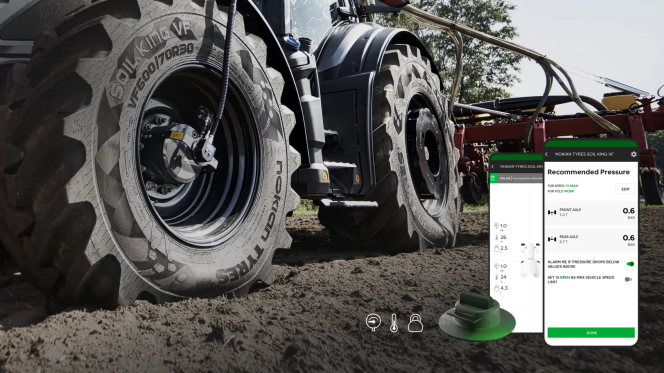
Finnish tyre maker Nokian Tyres has launched an advanced sensor system for tractor tyres that automatically calculates optimal pressure levels, a technology it said would help farmers reduce fuel costs and limit soil damage.
The Intuitu 2.0 system uses built-in sensors to measure a tractor’s operating weight and working conditions, then sends pressure recommendations to farmers through a mobile application. The technology is designed for the company’s Soil King VF range of agricultural tyres.
Farmers typically need expensive equipment and lengthy calculations to determine the correct tyre pressures for different loads and field conditions. Improper pressure can compact soil, reducing crop yields and increasing fuel consumption.
“By introducing Nokian Tyres Intuitu 2.0, we are offering agricultural professionals a groundbreaking technology that delivers clear, practical benefits to improve their daily work,” Paolo Pompei, president and chief executive of Nokian Tyres, said in a statement.
The system won a silver medal at the Agritechnica Innovation Award in September, one of the agriculture industry's most recognised honours, selected by an independent panel from Germany’s DLG agricultural society.
Nokian Tyres first introduced sensor technology in its agricultural tyres in 2019 and has been developing the system to provide additional functionality.
The company said it plans to extend smart tyre features to passenger cars in future. The technology would enable tyres to communicate continuously with vehicle safety systems, providing real-time data on road surface conditions, according to Mika Penttilä, head of digital technologies at Nokian Tyres.
“In the near future, tyres will continuously communicate with vehicles’ brake and assist systems, generating real-time data on the condition of the road surface and the overall driving conditions,” Penttilä said.
The data could also be shared with fleet operators, service centres, road authorities and maintenance teams to improve overall road safety, the company said.
- Sumitomo Rubber
- Falken Tyre
- SENSING CORE
- Porsche 911 GT3 R
- 2025 Nürburgring Ring Endurance Season
- NLS 2025
Sumitomo's SENSING CORE Enhances Motorsport Safety
- By TT News
- October 25, 2025
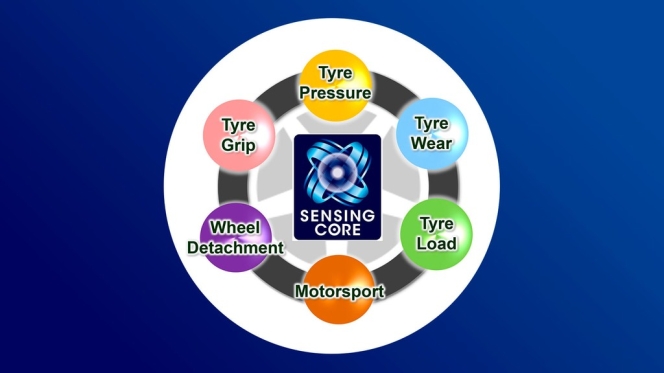
Sumitomo Rubber Industries is advancing vehicle safety and performance through its SENSING CORE technology, which has been rigorously validated under the extreme demands of motorsport. This sensorless system was tested extensively on Falken Tyre’s Porsche 911 GT3 R throughout the challenging 2025 Nürburgring Endurance Series. By leveraging the tyre itself as a sensor, the technology provides continuous real-time analysis of critical data points including tyre wear, road surface conditions, load and pressure, all without needing additional physical hardware. A key safety feature is its ability to detect loose wheel nuts, thereby helping to prevent dangerous incidents on the track.
The practical benefits were clearly demonstrated during the race season. On several occasions, the system provided the team with crucial early warnings about tyre pressure loss, information that was delivered faster than by conventional sensors. This advanced notice allowed the team to proactively adjust its strategy, bringing the cars in for earlier pit stops to avoid potential damage and maintain competitive performance. The consistent reliability of SENSING CORE, even on the notoriously difficult Nordschleife circuit, confirms its robustness.
Having proven its value in a high-stakes racing environment, this technology paves the way for broader applications. Sumitomo Rubber Industries aims to leverage these insights to enhance safety, efficiency and sustainability for future mobility solutions, including the development of autonomous vehicle fleets.
Aperia Launches Nearby Issues Feature For Fleet Tyre Maintenance
- By TT News
- October 21, 2025
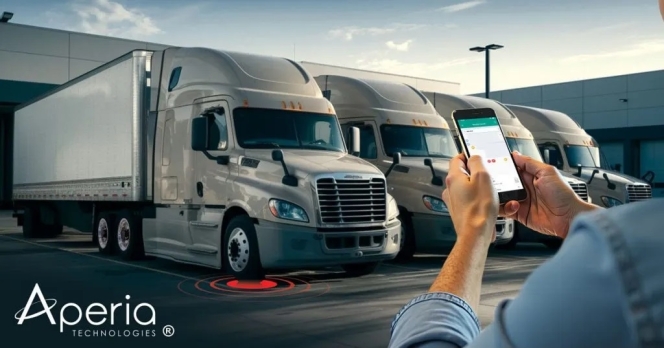
United States-based Aperia Technologies has launched ‘Nearby Issues’, a new feature on its Halo Connect platform to further enhance fleet tyre safety.
The addition, which is now available in the Halo Tech App, uses a technician’s real-time location to display trucks nearby that have tyre issues.
The company is a leading provider of tyre management technology, which focuses on providing solutions to maintain optimal tyre pressure for vehicles. It addresses the issue of tyre under-inflation, initially for the commercial trucking industry, but its expertise now extends to various vehicle architectures and markets.
Aperia's main products and services revolve around its 'Halo Tire Management Platform', which combines automatic inflation with predictive maintenance.
This new capability allows technicians, whether at a yard or on the road, to pinpoint the specific vehicles and tyres needing attention, proceed directly to the truck and resolve the issues immediately. While technicians already access tyre issue information through Halo Connect, Nearby Issues converts insight into instant, location-based action, enhancing convenience and efficiency.
Ralph Dimenna, CCO, Aperia Technologies, said, "Technicians don’t need more alerts; they need the right insights at the right time. Nearby Issues gives them a faster, smarter way to prioritise and resolve tire problems based on where they are, closing the gap between knowing an issue exists and getting it fixed."
With the new feature, technicians can:
- See What’s Nearby: View vehicles nearby that have tyre issues instantly.
- Prioritise for Action: Access a ranked list of trucks based on issue severity and count, enabling decision-making.
- Access Live Tyre Data: Connect over Bluetooth to view real-time tyre pressures and confirm that repairs are complete.
- Gain Full Transparency: Review detailed issue data, tyre health history and the vehicle’s exact location.
- Navigate with Ease: Use an interactive map with GPS positioning and severity-based colour coding.
- Stay Secure: Rely on controlled access available only to authenticated users physically near the vehicle.
Aperia Technologies stated that adding Nearby Issues to the Halo Connect platform via the Halo Tech App continues its aim to help fleets stay proactive, cut maintenance costs and maximise vehicle uptime.


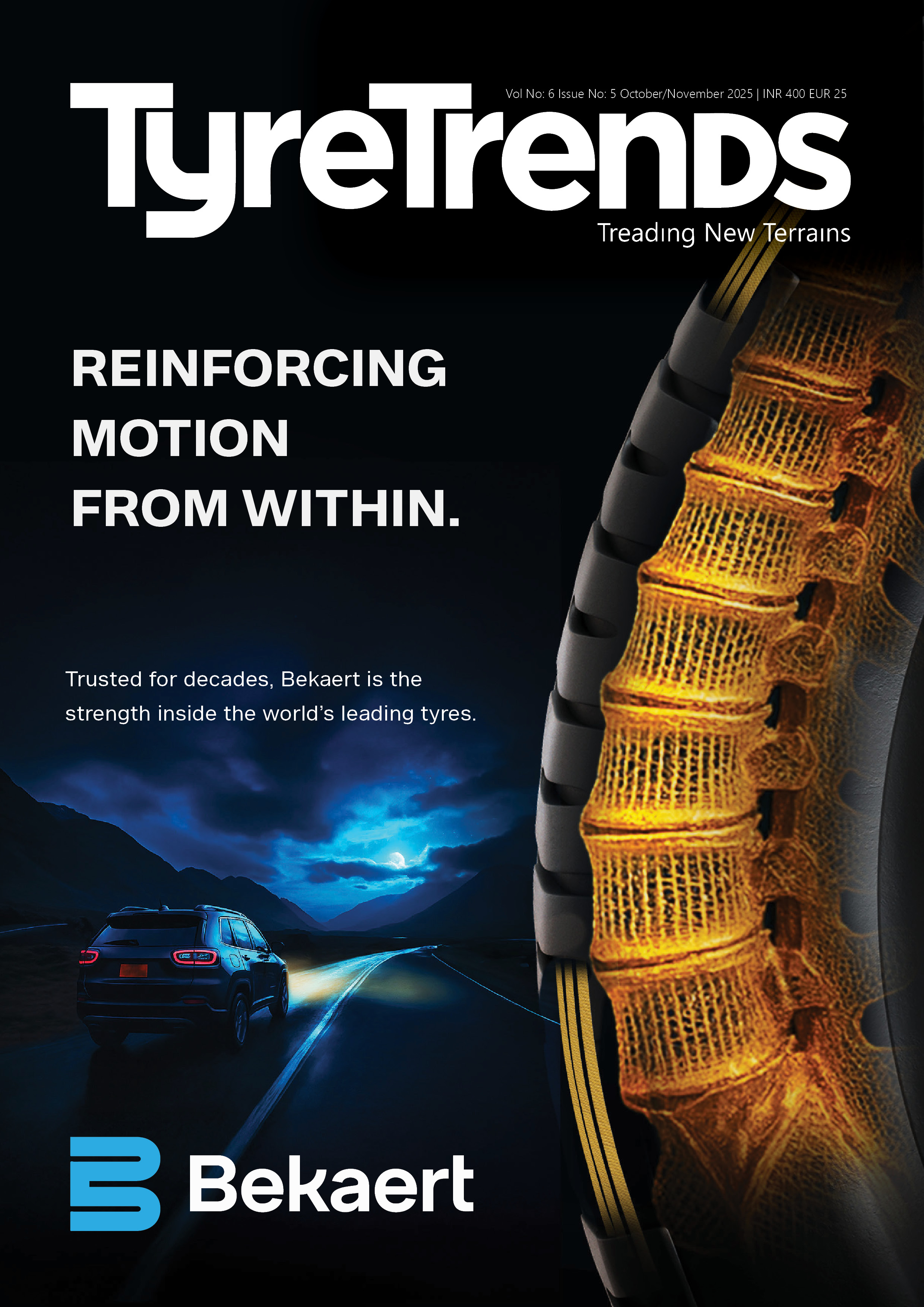


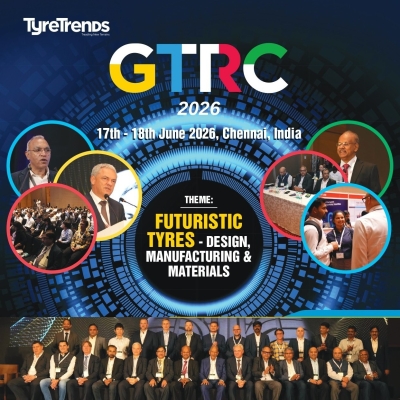
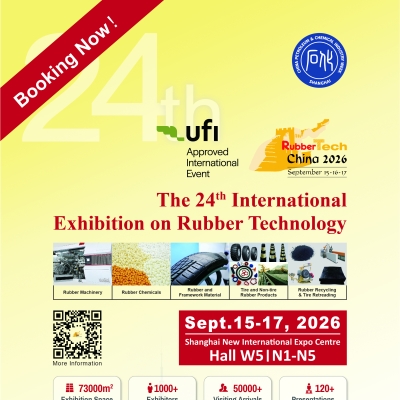
Comments (0)
ADD COMMENT